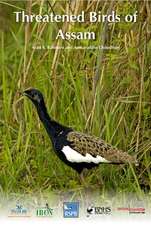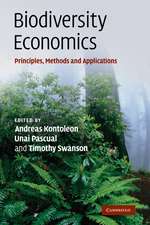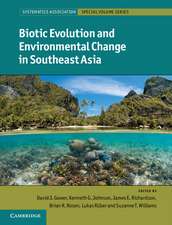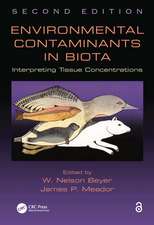Faunal Heritage of Rajasthan, India: General Background and Ecology of Vertebrates
Editat de B.K. Sharma, Seema Kulshreshtha, Asad R. Rahmanien Limba Engleză Hardback – 14 sep 2013
Broadly falling under the Indo-Malaya Ecozone, the three major biomes of Rajasthan include deserts and xeric shrublands, tropical and subtropical dry broadleaf forests, and tropical and subtropical moist broadleaf forests. The corresponding ecoregions to the above biomes are, respectively, the Thar Desert and northwestern thorn scrub forests, the Khathiar-Gir dry deciduous forests, and the Upper Gangtic Plains moist deciduous forests. Contrary to popular belief, the well-known Thar or Great Indian Desert occupies only a part of the state. Rajasthan is diagonally divided by the Aravallimountain ranges into arid and semi-arid regions. The latter have a spectacular variety of highly diversified and unique yet fragile ecosystems comprising lush green fields, marshes, grasslands, rocky patches and hilly terrains, dense forests, the southern plateau, fresh water wetlands, and salt lakes.
Apart from the floral richness, there is faunal abundance from fishes to mammals. In this volume, the various flagship and threatened species are described in the 24 chapters penned by top notch wildlife experts and academics. The world famous heronry, tiger reserves, wildlife sanctuaries and some threat-ridden biodiversity rich areas shall certainly draw the attention of readers from around the world.
| Toate formatele și edițiile | Preț | Express |
|---|---|---|
| Paperback (2) | 1229.28 lei 6-8 săpt. | |
| Springer International Publishing – 27 aug 2016 | 1229.28 lei 6-8 săpt. | |
| Springer – 23 aug 2016 | 1235.08 lei 6-8 săpt. | |
| Hardback (2) | 1235.43 lei 6-8 săpt. | |
| Springer International Publishing – 24 oct 2013 | 1235.43 lei 6-8 săpt. | |
| Springer – 14 sep 2013 | 1239.37 lei 6-8 săpt. |
Preț: 1239.37 lei
Preț vechi: 1511.42 lei
-18% Nou
Puncte Express: 1859
Preț estimativ în valută:
237.23€ • 257.77$ • 199.40£
237.23€ • 257.77$ • 199.40£
Carte tipărită la comandă
Livrare economică 21 aprilie-05 mai
Preluare comenzi: 021 569.72.76
Specificații
ISBN-13: 9781461407997
ISBN-10: 1461407990
Pagini: 684
Ilustrații: XXXI, 645 p. 619 illus., 485 illus. in color.
Dimensiuni: 155 x 235 x 40 mm
Greutate: 1.07 kg
Ediția:2013
Editura: Springer
Colecția Springer
Locul publicării:New York, NY, United States
ISBN-10: 1461407990
Pagini: 684
Ilustrații: XXXI, 645 p. 619 illus., 485 illus. in color.
Dimensiuni: 155 x 235 x 40 mm
Greutate: 1.07 kg
Ediția:2013
Editura: Springer
Colecția Springer
Locul publicării:New York, NY, United States
Public țintă
GraduateCuprins
Dedication-1.- Dedication-2.- Foreword.- Preface.- Acknowledgements.- Table of Contents.- Contributors.- Part I: Unveiling the Vivacious Rajasthan.- The Majestic Rajasthan: An Introduction.- Physiography and Biological Diversity of Rajasthan.- Historical, Socio-cultural and Mythological Aspects of Faunal Conservation in Rajasthan.- An Anthropological Account of Bonhomie and Opprobrium between Communities and Animals in Rajasthan.- Fossil Records of Rajasthan-. Part II: Faunal Ecology: An Insight-Piscifauna and Herpetofauna.- Ichthyofauna of Rajasthan.- Chelonian Status and Conservation in Rajasthan.- Important species of Lizards in the Thar Desert of Rajasthan.- Natural History Observations on the Indian Spiny-tailed Lizard (Uromastyx hardwickii) in the Thar Desert.- Ophidians of Rajasthan.- Part III: Faunal Ecology: An Insight-Avifauna.- Conservation of Bustards with Special Reference to Great Indian Bustard (Ardeotis nigriceps): The State Bird of Rajasthan.- Distribution, Status and Conservation of Lesser Florican Spheotides indica in Rajasthan.- Status and Distribution of Raptors in Rajasthan.- White-napped Tit Parus nuchalis - A vulnerable Species in Rajasthan.- Part IV: Faunal Ecology: An Insight-The Mammal Conglomerate.- Non-human Primates of Rajasthan.- Status of Tiger in Rajasthan.- Status, Distribution and Conservation of Leopard (Panthera pardus fusca) in Rajasthan.- Small Cats of Rajasthan.- Major Canids of Rajasthan.- The Status and Conservation of Sloth Bears in Rajasthan.- Chiropteran Fauna of Rajasthan-Taxonomy, Distribution and Status.- Non-Volant Small Mammals of Rajasthan.- Squirrels of Rajasthan with special reference to Elliot’s Giant Flying Squirrel Petaurista petaurista philippensis.-Wild Ungulates in Rajasthan.- Appendices.- Glossary.- Further Reading.- Index.- The Book and Its Audience.- About the Editors.
Recenzii
“The compendium is a valuable contribution oflasting value to the ecology of Rajasthan despite its primary focus onvertebrate fauna. … the book will be enjoyed by zoologists, ecologists,conservationists, wildlife managers, and by many people from outside the Stateof Rajasthan who will gain useful insights into its natural heritage.” (BrijGopal, International Journal of Ecology and Environmental Sciences, Vol. 41(1-2), 2015)
Textul de pe ultima copertă
This is the first ever monumental and scientific documentation of the faunal wealth of the Indian Desert state of Rajasthan. This volume, the first of two, provides background on Rajasthan and covers species diversity and distribution of fauna. A scholarly contribution to the field of knowledge, it provides novel and vital information on the vertebrate faunal heritage of India’s largest state.
Broadly falling under the Indo-Malaya Ecozone, the three major biomes of Rajasthan include deserts and xeric shrublands, tropical and subtropical dry broadleaf forests, and tropical and subtropical moist broadleaf forests. The corresponding ecoregions to the above biomes are, respectively, the Thar Desert and northwestern thorn scrub forests, the Khathiar-Gir dry deciduous forests, and the Upper Gangtic Plains moist deciduous forests. Contrary to popular belief, the well-known Thar or Great Indian Desert occupies only a part of the state. Rajasthan is diagonally divided by the Aravallimountain ranges into arid and semi-arid regions. The latter have a spectacular variety of highly diversified and unique yet fragile ecosystems comprising lush green fields, marshes, grasslands, rocky patches and hilly terrains, dense forests, the southern plateau, fresh water wetlands, and salt lakes.
Apart from the floral richness, there is faunal abundance from fishes to mammals. In this volume, the various flagship and threatened species are described in the 24 chapters penned by top notch wildlife experts and academics. The world famous heronry, tiger reserves, wildlife sanctuaries and some threat-ridden biodiversity rich areas shall certainly draw the attention of readers from around the world.
Broadly falling under the Indo-Malaya Ecozone, the three major biomes of Rajasthan include deserts and xeric shrublands, tropical and subtropical dry broadleaf forests, and tropical and subtropical moist broadleaf forests. The corresponding ecoregions to the above biomes are, respectively, the Thar Desert and northwestern thorn scrub forests, the Khathiar-Gir dry deciduous forests, and the Upper Gangtic Plains moist deciduous forests. Contrary to popular belief, the well-known Thar or Great Indian Desert occupies only a part of the state. Rajasthan is diagonally divided by the Aravallimountain ranges into arid and semi-arid regions. The latter have a spectacular variety of highly diversified and unique yet fragile ecosystems comprising lush green fields, marshes, grasslands, rocky patches and hilly terrains, dense forests, the southern plateau, fresh water wetlands, and salt lakes.
Apart from the floral richness, there is faunal abundance from fishes to mammals. In this volume, the various flagship and threatened species are described in the 24 chapters penned by top notch wildlife experts and academics. The world famous heronry, tiger reserves, wildlife sanctuaries and some threat-ridden biodiversity rich areas shall certainly draw the attention of readers from around the world.
Caracteristici
This is the first ever scientific documentation of the faunal wealth of Rajasthan A significant contribution to knowledge in the field of animal ecology Implications for ecology and conservation in similar areas of the world Foreword by Paul H Harvey, CBE, FRS, Professor & Head, Department of Zoology, University of Oxford, United Kingdom Includes supplementary material: sn.pub/extras
















